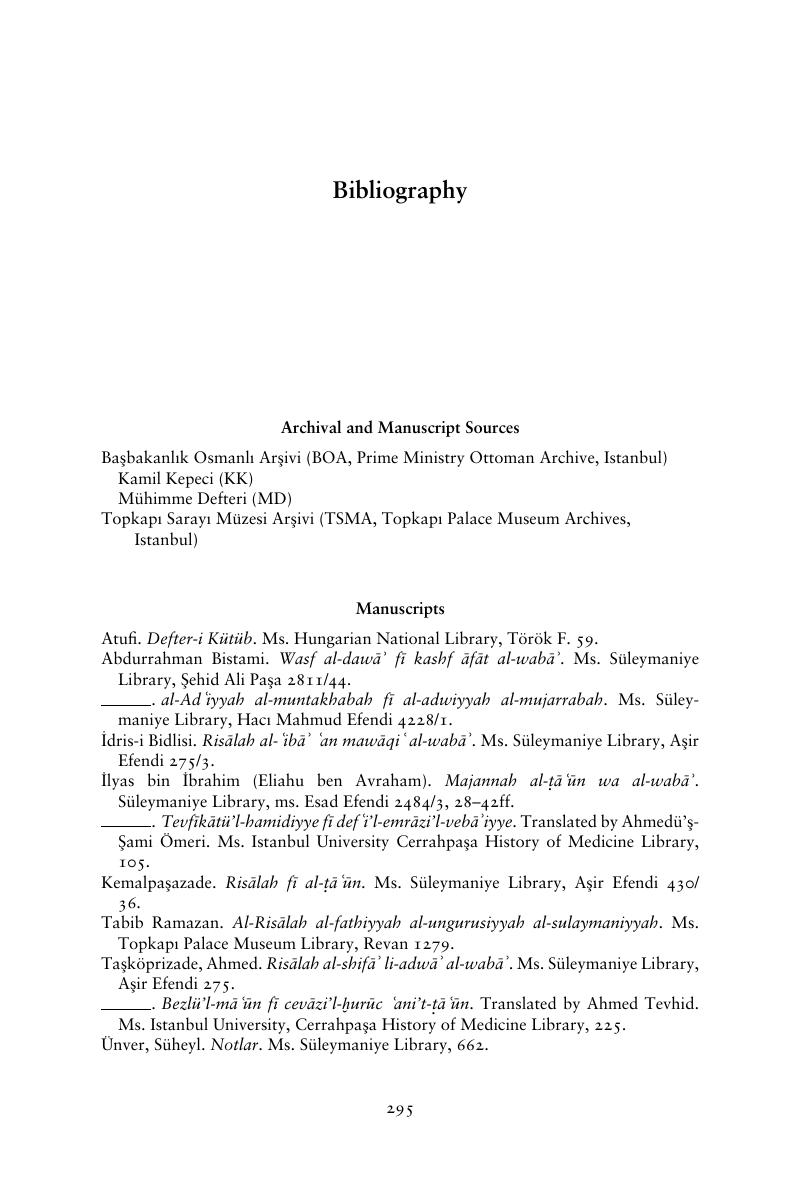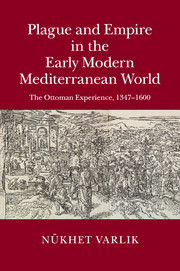Book contents
- Plague and Empire in the Early Modern Mediterranean World
- Plague and Empire in the Early Modern Mediterranean World
- Copyright page
- Dedication
- Contents
- Figures, Maps, and Tables
- Acknowledgments
- Abbreviations
- Note on Transliteration and Dates
- Introduction
- Part I Plague
- Part II Plague of Empire
- Part III Empire of Plague
- Epilogue
- Bibliography
- Index
- References
Bibliography
Published online by Cambridge University Press: 05 August 2015
- Plague and Empire in the Early Modern Mediterranean World
- Plague and Empire in the Early Modern Mediterranean World
- Copyright page
- Dedication
- Contents
- Figures, Maps, and Tables
- Acknowledgments
- Abbreviations
- Note on Transliteration and Dates
- Introduction
- Part I Plague
- Part II Plague of Empire
- Part III Empire of Plague
- Epilogue
- Bibliography
- Index
- References
Summary

- Type
- Chapter
- Information
- Plague and Empire in the Early Modern Mediterranean WorldThe Ottoman Experience, 1347–1600, pp. 295 - 326Publisher: Cambridge University PressPrint publication year: 2015



